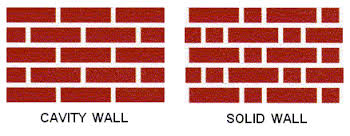
We plan to partner these installations with the GDHIF scheme (Green Deal Home Improvement Fund) by doing so we will be able to offer solid wall installation virtually fee.
To do this you would first need to have a Green Deal Advice report carried out on your property, if you have already has an EPC or GDAR carried out within the last 2 years this can also be used for your recommendations. If you do not have an existing EPC/GDAR on your property that is less than 2 years old, you will have to get a Green Deal Assessment carried out. When applying for your voucher you can be re-
Once an assessor has visited your property they will then produce a report with recommendations as to what measures can be installed in your property to make it more energy efficient whilst also reducing your fuel bills and reducing the amount of Carbon produced.
Once the report has been carried out on your property and you have the recommendations for making your property more efficient. You can then apply for you GDHIF voucher using their simple online form, however the measures that you are applying for funding on MUST Be recommended in your report.
You can get up to £1,250 towards the cost of installing any 2 of the following measures;
1. A condensing gas boiler on mains gas
2. Double or triple glazing as a replacement for single glazing
3. Secondary Glazing
4. Energy efficient replacement external doors
5. Cavity wall insulation
6. floor insulation
7. flat-
8. Insulation for a room in the roof
9. A replacement warm air unit
10. Fan-
11. A waste water heat recovery system
Because solid walls let through twice as much heat as cavity walls do, insulating your solid walls could cut your heating costs considerably.
If your home was built before 1919, it’s external walls are probably solid rather than cavity walls. Cavity walls are made of two layers with a small gap or “Cavity” between them. Solid walls have no gap, so they let more heat through.
To determine the type of wall you have at your property measure the width of the wall. Look at en external wall window or door and if the brick wall is less than 260 mm, then it is likely solid wall, while if it is greater, it is probably a cavity wall.

The layout of the bricks can also help determine the type of wall that is present. Shown in the image, as you can see Cavity walls use a more consistent brick size throughout, whereas solid wall uses different sizes of bricks typically full sizes and half sizes.






Eco Gec
Eco GEC

EcoGEC_

Eco GEC